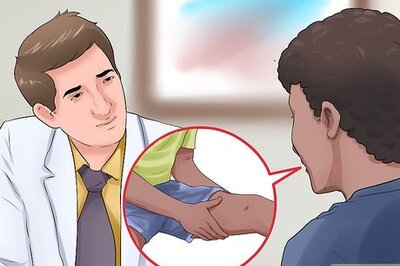
views
Research has indicated a notable increase in the occurrence of heart attacks and strokes during cold spells, with the risk more than doubling. A cold spell was defined as a period significantly colder than the rest of the month, and the key factor contributing to this heightened risk was found to be the drop in temperature compared to previous days, rather than the absolute coldness.
Our cardiovascular system is in a constant state of adaptation to external conditions and internal factors, ensuring a steady flow of blood to vital organs. In response to cold, the nervous system activates mechanisms to prevent a drop in core body temperature, leading to vasoconstriction in the skin, fingers, and toes. While this narrowing helps retain heat, it puts additional strain on the heart, requiring it to work harder to pump blood throughout the body, resulting in increased heart rate and blood pressure. For individuals with existing heart conditions, especially during physical exertion, this extra strain can trigger heart symptoms.
Exercise, a natural accelerant of heart rate and blood flow, can exacerbate symptoms for people with conditions like angina, particularly in colder months. Additionally, cold weather thickens the blood and increases its tendency to clot, raising the risk of heart attacks and strokes. Therefore, individuals with heart conditions are advised to stay warm during winter, limiting exposure to extreme cold and opting for indoor exercises.
Hypertensive individuals also face challenges during colder periods, experiencing elevated blood pressure levels. Symptoms such as persistent headaches, dizziness, difficulty concentrating, fatigue, and unexplained breathing issues may indicate uncontrolled hypertension. Regular monitoring of blood pressure at home is recommended to detect any fluctuations.
To combat the cold and reduce cardiovascular risks during winter, several effective strategies can be employed. Layering clothing, using draught excluders, maintaining a minimum room temperature of 22°C, consuming warming foods and beverages, and staying physically active are key recommendations. These measures aim to minimize the impact of cold weather on the cardiovascular system, providing a proactive approach to maintaining heart health.
The understanding the physiological responses to cold and adopting practical measures to stay warm and active can significantly reduce the risk of cardiovascular events during winter, particularly for individuals with pre-existing heart conditions or hypertension. It is crucial for individuals experiencing symptoms such as chest heaviness or persistent headaches during cold weather to seek immediate medical attention, as these may indicate a worsening cardiac condition or uncontrolled hypertension.


















Comments
0 comment